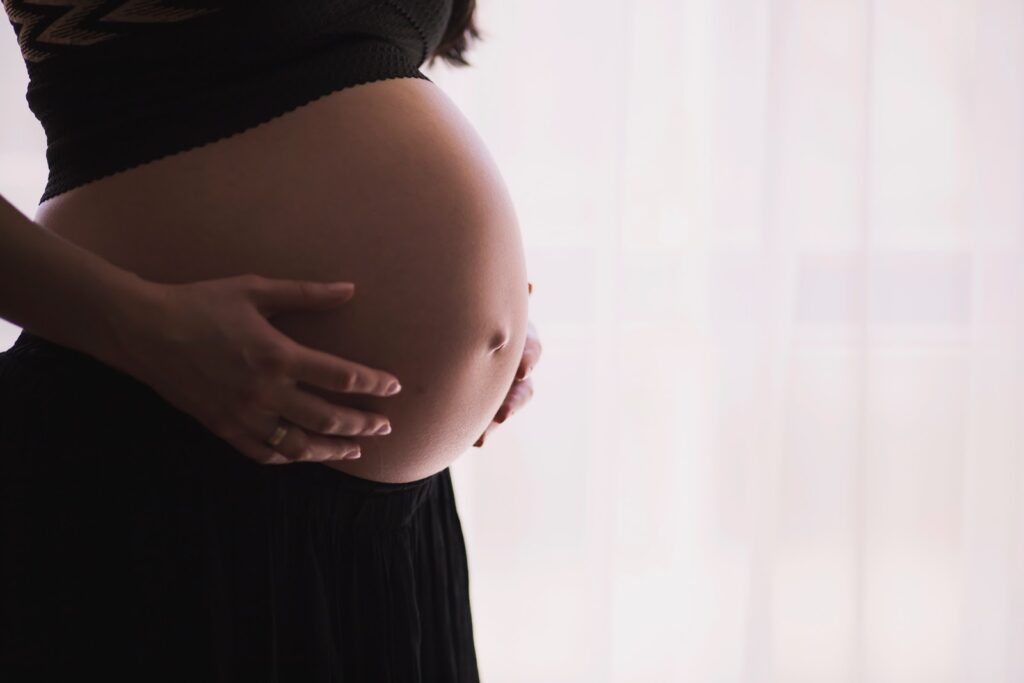Posture describes your skeletal alignment. I want you to check your own posture now as you read this blog. Is your spine naturally stacked into a series of healthy curves? Is your chest gently open and your neck naturally elongated and relaxed, even if you are looking down?
Pregnant or not, our posture generally across the population is poor. Therefore it is important not to blame poor posture on pregnancy. If you experience aches, pains or injuries that prevent you from doing the things you love, beginning the 10 Week Introduction to TIE program will transform your posture and ensure you overcome aches and pain, and get you back to doing the things you love.
Taking this into consideration, let’s take a look at common postural changes that can occur during pregnancy and how we should be mindful of these changes.
What changes happen to your posture during pregnancy?

During pregnancy there can be changes to your alignment that include an increase in the lumbar spine curve, which is commonly called a sway back. A sway back brings your centre of gravity forward. Other changes that can occur include an increase in roundedness of the upper back, which can draw the head forward.
Both of these are postural alignment changes can occur especially as the pregnancy advances and the baby or babies grow. If one or either of these changes occurs, pain and discomfort can develop around the Sacroiliac Joint (SIJ) where your hips meet the base of your spine. That is because the SIJ is also drawn away from its correct anatomical position.
There are many ways alignment, especially of the spine, pelvis, and thorax can be adversely affected by a pregnancy, especially during the final trimester. However, not to stress, regular TIE practice will ensure you have great alignment, which translates to great posture. Having great alignment is the foundation our body needs to move well and look great all day. Learn more about TIE and our Introduction to TIE program by clicking here.
Does Posture affect pregnancy?

Great skeletal alignment, great posture, is the foundation our body must have to look, feel, and perform it’s best no matter what. During pregnancy, this is especially so. Achieving great posture before pregnancy is ideal as starting pregnancy with great alignment of the spine, thorax, and pelvis help the body use all of its muscles and maintain muscle balance as the baby grows.
It also helps provide the appropriate space and distance between the shoulders and the hips which helps mother (and baby) be as comfortable as possible whether sitting, standing, moving, or exercising.
What positions should be avoided during pregnancy?

It is important to maintain a variety of exercise and movement during pregnancy. This will be especially beneficial and safe if you have great posture before you exercise. I always stress the importance of keeping your exercise style similar to before pregnancy. For example, don’t suddenly start a running program having never been a runner previously. The Invisible Exercise is a no-impact, total body strengthening and stabilising workout. Learn more about The Introduction to TIE program here.
During pregnancy it can feel great to do a stretch or yoga class but it is important to keep in mind that hormone levels increase during pregnancy and this may result in joint instability as ligaments loosen. Therefore it is important not to try to stretch too far and if you are hypermobile (very flexible) it is really important to avoid excessive stretching.
A mat or floor exercise class can be great but at 16 weeks it is recommended you do not lie on your back for longer than 4 minutes at a time. Some pregnant women find they can lie comfortably on their back throughout their pregnancy and others feel uncomfortable as early as 12 weeks.
Of course, listening to your body during pregnancy is especially important.
Can sitting hunched over hurt the baby?

Sitting hunched over, or slouching, means the pelvis rolls backwards. This can affect the baby as it can result in the baby entering the pelvis in a posterior position. That means the baby’s back is more likely to be positioned against the mother’s back. If this is the case the baby will need to turn during labour to move through the birth canal the right way. This may make labour harder and longer.
It is also recommended to avoid crossing legs during pregnancy as this can also roll the pelvis backward during sitting.
Great posture starts with a healthy spine ensuring sitting, standing and moving is as safe and easy as possible, especially during pregnancy.

